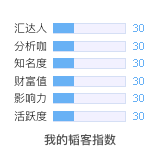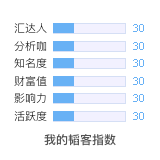汇市买卖经验(2)
下面是我以前培养出来的学员之一的一位买卖手写的对国际市场的经验,汇市买卖的经验。
可参考在买卖的过程中。
USD/JPY HINTS
One of the silly rules of thumb in USD/JPY trading is it rarely moves 700-800 pips in a row without 200 pips or more correction in the middle and it almost always retraces back to 350 pips advance point from the start of its 700-800 pips move. All because of liquidity problem in Yen market.
The real battle of bulls and bears for medium-term trend is always around 20 day MA line in Yen market. Daily option activities here and there are of no relevance as far as medium-term trend is concerned.
Yen position traders sit on their positions gunning for several hundred pips at one go. For day trades, much more nimble approach is required. As Yen position trader, please never buy anything below falling daily 20 MA and never sell anything above rising daily 20 MA, no matter how attractive they look. So start buying only when daily 20 MA starts rising, from whatever level, is not only safe but also proven way of making money although it sounds so simple.
You can read how Yen traders make intraday moves by watching 30 min USD/JPY candlestick chart or line chart if you are not familiar with candle nuance. 4, 8 hourlies are for positional moves.
The Tokyo Fix is where the FX rate is established for the day by the banks for their customers. So even though the FX rate may change during the day the customer gets the rate at the time of the fix. There is a fix in Tokyo, London and Toronto (more I am sure). Importers generally settle their accounts on the 5th, 10th, 15th, etc, of the month before and up until the fix ():50 GMT). Sometimes, if there is an "excess" dollar demand $/JPY will continue to climb slightly after the fix. $Bulls will also use this as a staging for extending a rally. $Bears (Yen Bulls) will use this to establish better shorts.
REACTING TO NEWS
News or data are always read by the market along the prevailing market bias. Data can provide a good reading for the state of the market. If the data is bad but the price is still rising or not affected, it must be a bull market which means buy on dip strategy is a better one. Conversely, if the data is good but the price is not rising or even falling, it must be a bear market which means sell on bounce strategy is a better one. The inflexion point must be when bad news or good news. no longer affect the prices as they have done before. Medium/long-term bias changes are usually accompanied by such reactions to the news.
It is not the numbers that counts but how the market reacts to the numbers that counts. That gives some comfort to those who are not privy to the numbers already
FAIR VALUE
The concept of fair value in any currency is largely that of CBers and economists and not much about trading ..Almost always currencies overshoot from the fair value areas some 20-30% in their medium-term trend and what makes all hard currencies range in reasonable areas overtime since we had this floating regime in 1971 must the ability of relevant CBs to control the currency ranges and their real economy's weakness or strength to support those ranges. ECB folks were not joking when they said Eur/usd was some 25% undervalued from the fair value when Eur/Usd was below parity levels two years ago. Same goes for BOJ when they were saying Yen was some 10-20% overvalued when it was trading around 100 some three years ago too. That is how these folks view the markets and try to guide the market. Of course, when US Treasury folks say "Dollar is still strong" when it is falling, they are begging the market to sell more Dollars.
DIFFERENT CENTERS
The first hour after opening in Tokyo tend to provide the best liquidity of the day and that is when most heavyweight players try to position their way without having much difficulty for the day. Sydney open is more often used as an ambush hour by certain players using the time window till Tokyo open. One rule of thumb is when Yen jumps at Tokyo open the chances are it will continue throughout the day and a few more days. On different point, learn to position trade Yen or any other currency if one is really going to make a big money one day.
One hour from Tokyo open, London open and NY open are the times where most liquidity of the market exist. And that is where market makers are busy setting the trend for the session or even the day. Your observation has a merit because most of the session or daily moves are started either in London open or Tokyo open or NY open. Especially London Open. Other markets are too thin for any good sized traders to make their market views felt.
London is just a market place where all sorts of Forex folks flock to buy and sell. It does not have to be London folks. It could be anyone from anywhere in the world with deep pockets who start setting the market direction on a given day. Same goes for NY and Tokyo sessions markets. In any case, Tokyo and NY still relatively small markets when compared to London as far as Forex goes.
A WORD FOR NEW TRADERS
Traders that try to pick the tops and bottoms of the market throughout the day end up with mostly misery because inexperienced fellows in Forex departments even in first division clubs try to pick the tops and bottoms believing that is where the real big money is. And ego demonstration and bonus consideration comes into play too for smart college graduates. The first thing I do when facing new recruits is, do my best to destroy their ego and fear in the market first. Once their ego and fear are reasonably cured, they become dutiful followers of the market like Pavolv抯 hounds and they can survive. And once they can survive, they can be taught on how to put temporary tops and bottoms to the market at much higher level of speculation school. Then, that may take at least a decade of training too.
QUIPS FROM BC
Forex is all about how to hit the next ball correctly rather than worrying about something of a distant future. The next ball may be for 2 pips or 20 pips or 200 pips or 500 pips depending on a trader's style.
Anything is possible in Forex.
Good quality info is everything in this game.
Bottom picking in the Usd/Jpy is the Mother of all risky trades.
We learn how to trade till we stop trading and we learn from each other everyday. That is the beauty of trading and life in general.
Do not worry about what market will do. Just worry about what you will do when market reaches your "pain point" or "happy point". You will have an easier life as a trader that way.
Forex players can operate quietly, but they cannot hide their moves in those charts.
Good sleep is essential for good trading but most of the traders I know of seem to sleep with one eye open.
[ 本帖最后由 midas 于 2005-9-2 12:19 编辑 ]
发表于:2005-09-05 13:59只看该作者
2楼
bc也是我的一位启蒙老师了(一厢情愿的),从他那里学会很多投机市场的东西。不过我只知道他一般在上海和北京活动,其它的一点都不了解。在这里第一次看到midas老师的文章,我的第一反应就是midas老师和bc是同一个人。虽然猜错,也不算错太多。非常遗憾啊,不能在那样一个圈子里有那样的机会向midas老师学习!
老师,bc在德日央行中做过,那他是华人吗?我一直以为bc是BoC的意思。有关他的事情,老师方便的时候能不能讲讲。没有进入那样个圈子,看看那个圈子的人是怎么工作的,也算是种不错的学习。
3楼
原帖由 kinghenry 于 2005-9-5 21:59 发表 bc也是我的一位启蒙老师了(一厢情愿的),从他那里学会很多投机市场的东西。不过我只知道他一般在上海和北京活动,其它的一点都不了解。在这里第一次看到midas老师的文章,我的第一反应就是midas老师和bc是同一个人 ...












